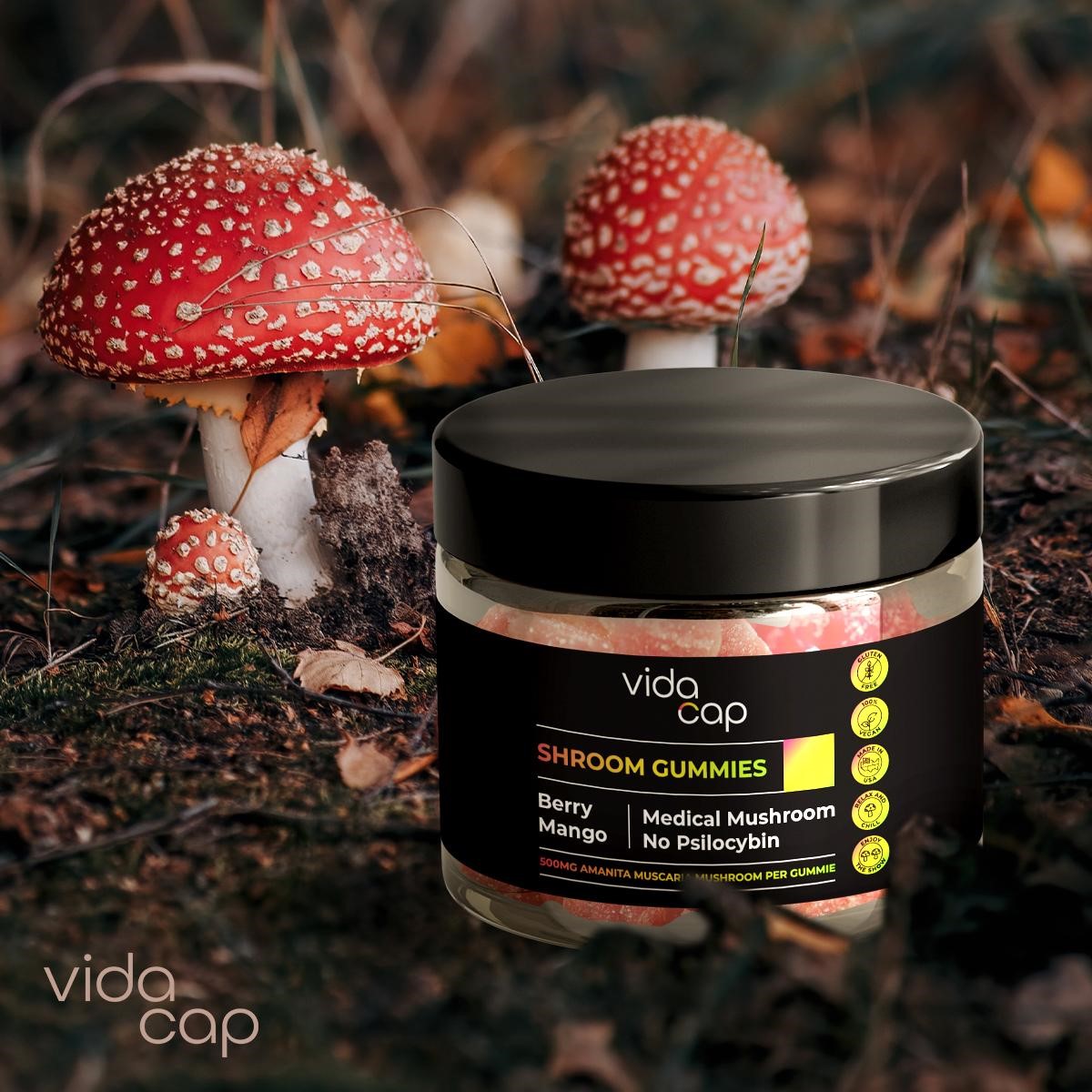
The Fly agaric, Amanita muscaria, has long captivated the imagination with its unique red cap and white dots. This iconic mushroom has a long history intertwined with art and literature, acting as a muse to numerous artists and writers over the centuries.
Amanita muscaria continues to conjure a sense of enchantment and mystery, from ancient folklore and religious symbolism to current works of art. In this article, we will look at the intriguing presence of Amanita muscaria in numerous art genres, as well as its long-lasting influence on the creative landscape.
What is Amanita Muscaria?
Amanita muscaria is a fascinating and well-known mushroom species belonging to the Amanita genus. It is identifiable by its vivid red cap covered with white dots and features in many illustrations from fairy tales and mythology.
Amanita muscaria contains the compounds muscimol and ibotenic acid, which have psychoactive effects. This mushroom is native to temperate regions of the Northern Hemisphere and has a long history of cultural significance, having been employed in religious rites and shamanic practices by numerous indigenous civilizations.
Despite its enticing appearance, Amanita muscaria can cause people to become ill if they fail to cook the mushroom properly before consuming it. However, when prepared correctly, Amanita muscaria can have fascinating psychoactive effects.
Can You Buy Amanita Muscaria Products Online?
Yes, you can buy Amantia muscaria products from the leading brand VidaCap. VidaCap is a mushroom supplement company based in the United States that specializes in medicinal mushrooms.
One of VidaCap’s most popular products is their Amanita muscaria gummies, which contain 500mg of Amanita extract. They are vegan and gluten-free and are available in a tasty Berry-Mango flavor.
VidaCap has independent labs test all of its products, including its Amanita muscaria gummies, to ensure their purity and safety. You can find links to the lab reports on the product page of VidaCap’s website, vidacap.com.
These Certificates of Analysis, or independent lab reports, also detail the ibotenic acid and muscimol concentrations in VidaCap’s Amanita muscaria gummies. Ibotenic acid is converted to muscimol during the decarboxylation process, which provides more relaxing and calming effects. While not everyone will have the same experience, most people describe VidaCap’s Amanita muscaria mushroom gummies amanita as calming and balancing.
Ancient Folklore and Mythology
The fascination of Amanita muscaria is rooted in ancient tradition and mythology. This Amanita species was revered by indigenous societies worldwide for its psychoactive effects. For example, Siberian tribes believed that consuming Amanita muscaria would allow them to access the spirit world. These concepts and experiences were frequently incorporated into oral traditions, art, and ceremonies. Over time, the brilliant red and white hue of the Amanita muscaria mushroom became connected with mystical worlds and celestial beings.
Artistic Representation
Artists have long attempted to recreate the ethereal spirit of Amanita muscaria in their paintings. The mushroom was commonly featured in religious manuscripts in medieval European art, symbolizing the Tree of Life or the forbidden fruit in the Garden of Eden.
The Renaissance period saw a surge in interest in botany, which resulted in detailed illustrations of species such as Amanita muscaria. With the emergence of symbolism in art in the nineteenth century, the mushroom was included in paintings as a symbol of spiritual transcendence.
Literary Inspirations
Amanita muscaria’s allure extends beyond visual arts, permeating the realm of literature. Authors and poets have often drawn upon its mystique to infuse their works with a touch of magic. Lewis Carroll’s “Alice’s Adventures in Wonderland” features a scene where Alice encounters a talking caterpillar sitting atop a giant mushroom, widely believed to be inspired by Amanita muscaria.
In J.R.R. Tolkien’s “The Hobbit,” the character of Gandalf employs a smoking mixture that contains Amanita muscaria, which contributes to the magical atmosphere of Middle-earth.
Modern Interpretations
In contemporary art, Amanita muscaria continues to inspire artists across various mediums. From intricate sculptures to psychedelic illustrations, its image is often used to evoke a sense of wonder and introspection. The mushroom’s association with altered states of consciousness has influenced the psychedelic art movement, where its vivid colors and surreal patterns are recurrent motifs.
Final Thoughts on Amanita Muscaria in Art and Literature
The continuing presence of Amanita muscaria throughout art and literature reflects the human fascination with the mysterious and the magical. This renowned mushroom continues to captivate the imagination of artists and authors worldwide, whether through ancient legend, religious symbolism, or modern interpretations.
Given its remarkable appearance and psychoactive properties, it is a powerful symbol of transcendence and the study of altered states of consciousness. As long as people create art, Amanita muscaria will serve as a source of creative inspiration.





